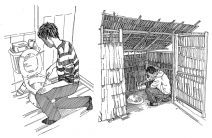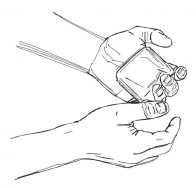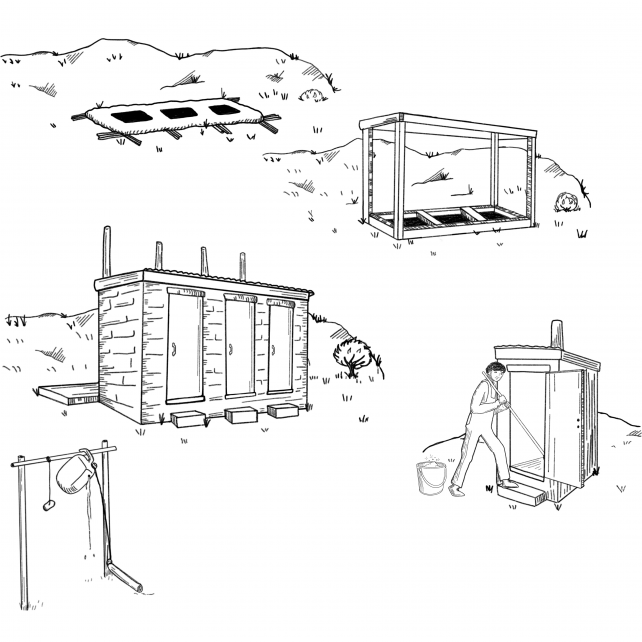33. Encouraging the use and maintanace of latrines
33. Encouraging the use and maintanace of latrines
Last update: 2023-04-03
Overview
- Many diseases (including diarrhoea, cholera, typhoid and hepatitis E and A) spread to others when faeces contaminate water, hands, food or flies and enter another person’s mouth. This form of transmission is called “faecal-oral”.
- Using a latrine and disposing of faeces properly can save many lives during an epidemic. When everyone uses latrines, the environment remains clean. It is important to put the faeces of children and babies in the latrine too as their faeces also contains germs.
- In an epidemic, encouraging the community to use and maintain latrines is an important part of preventing the spread of disease.
What to do and how to do it
Encouraging the use of latrines
- Many social and cultural issues may cause people not to use them.
- Find out what will motivate people to use the latrines and encourage them accordingly.
- Discuss with the community what challenges they could face to use them and how to make them available for all users (children, elderly, people with disabilities etc.)
- Many types of latrines, such as pit latrines, can be built easily with local materials. The type of latrine that is built in any given context will depend on:
- The preferences of the community.
- How much space the community has.
- The soil type and how close the water in the ground is to the surface (the water table).
- The location of water sources (the distance between containment facilities and water sources should be at least 30 metres, and the bottom of pits should be at least 1.5 metres above the groundwater table).
- The number of people who will use the latrine(s).
- How often the faeces should be removed. If there is a need for external management, the cost, availability and access should be considered.
Ask an expert in water, sanitation and hygiene or your volunteer supervisor for information on how to build latrines.
Making latrines safe and useable
- Ensure hygiene is possible
- It is very important to wash hands after going to the toilet to prevent the spread of disease. All latrines should have a place close by to wash hands. It must be in working order and water and soap must be available.
- Provide locally appropriate anal cleansing material (to wipe or wash after going to the toilet).
- If using a trench latrine, provide soil to cover the faeces.
- Ensure latrines are safe to use and accessible to all
- Make sure women and girls feel safe to use latrines during the day and at night.
- Males and females should use separate latrines
- Latrines should be well-lit
- Users should be able to lock them from the inside
- They should have hooks or other device to hang clothes so they do not stay on the floor
- They should have soundly built walls and doors to ensure privacy and prevent people/animals from going in and out
- They should have a place to dispose menstrual or incontinence materials
- They should have a handle or ropes to help elderly or people with disabilities
- They should be adapted to children to stop them falling inside
- If latrines are elevated, ensure that there is a ramp with an appropriate slope for a person with a disability to access it alone
- Make sure women and girls feel safe to use latrines during the day and at night.
Ensure latrines are maintained
- Make sure that latrines are physically maintained and robust, so they remain safe for use.
- Latrine pits and tanks fill up and need to be emptied.
- How quickly this happens depends on how many people use them, how big the pit or tank is, the soil type, and whether people throw rubbish or menstrual pads into the pit
- When possible, create committees in the community to maintain the latrine, and make sure they have all the materials they need.


